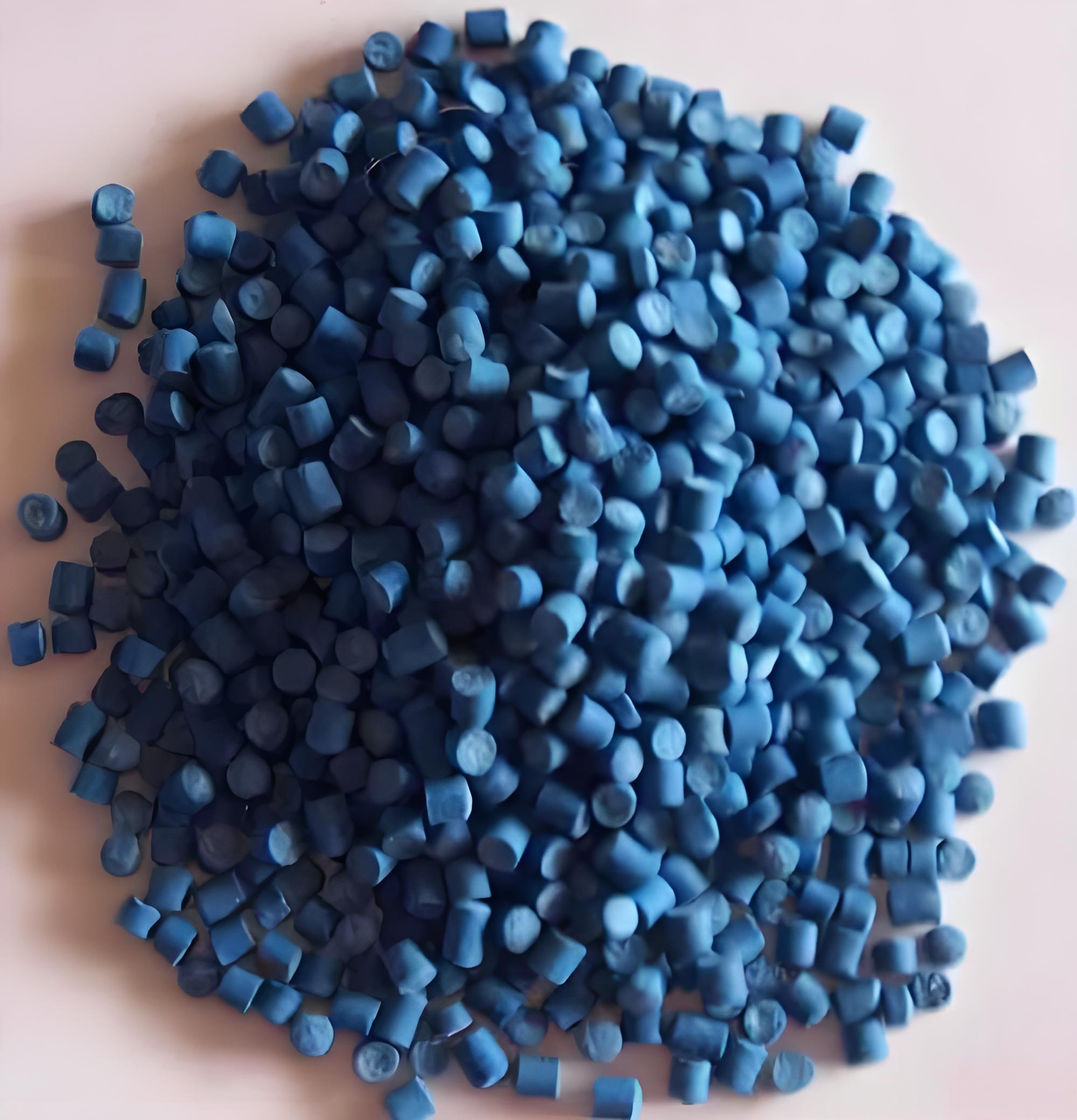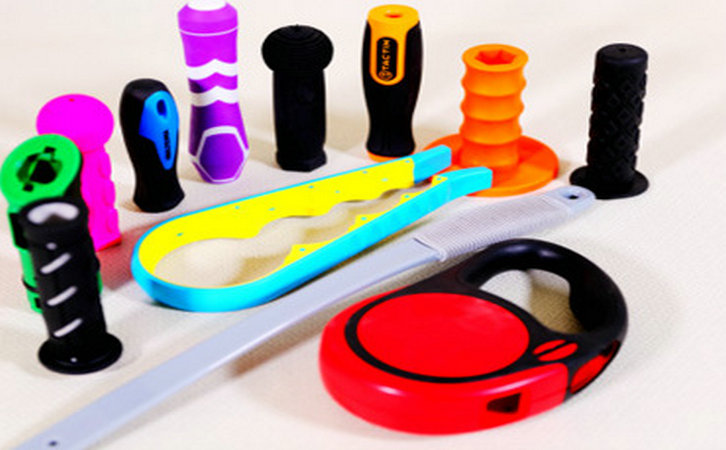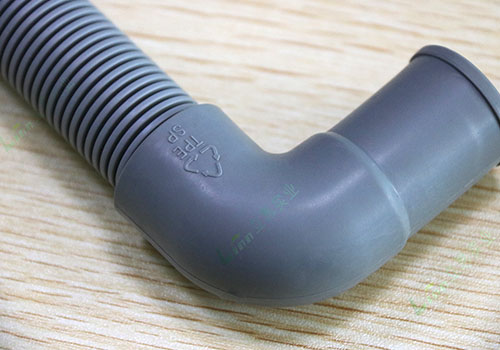Having spent over a decade in the plastics and elastomer industry, I’ve worked with countless material combinations, helping manufacturers craft everything from durable packaging to flexible consumer goods. One question that pops up frequently, especially among those looking to tweak material properties or cut costs, is whether PE (Polyethylene) and TPR (Thermoplastic Rubber) can be blended together. It’s a practical concern—maybe you’re aiming for a balance of PE’s toughness and TPR’s flexibility for a product like a grip, seal, or film. But mixing these materials isn’t as simple as tossing them into an extruder. Drawing from my experience in material compounding and real-world projects, I’ll explore whether PE and TPR can be mixed, the challenges involved, and how to make it work for your application. Let’s get into the details with a hands-on perspective.

Why Mixing PE and TPR Matters
Blending materials like PE and TPR often comes up when you’re trying to achieve specific properties—like combining PE’s rigidity with TPR’s elasticity—or repurpose scraps to save costs. PE is a versatile, widely used plastic, while TPR offers rubber-like softness. A successful blend could open up possibilities for products like flexible films, soft-touch handles, or even footwear components. But compatibility and processing are critical, and I’ve seen projects go awry when these are overlooked. My goal here is to share what I’ve learned from years of trial and error to help you navigate this process.
Understanding PE and TPR
Let’s start with a quick rundown of the materials to set the stage:
PE (Polyethylene) is a thermoplastic available in forms like LDPE (Low-Density Polyethylene), HDPE (High-Density Polyethylene), and LLDPE (Linear Low-Density Polyethylene). It’s known for its toughness, chemical resistance, and low cost, used in everything from plastic bags (LDPE) to pipes (HDPE).
TPR (Thermoplastic Rubber) is a type of thermoplastic elastomer, often based on SBS (Styrene-Butadiene-Styrene) or SEBS (Styrene-Ethylene-Butylene-Styrene). It mimics rubber’s flexibility but can be melted and molded like plastic, making it ideal for grips, seals, and soles.
In my early days working with a packaging manufacturer, I saw confusion when teams assumed PE and TPR could be blended like similar polymers. Their chemical differences—PE’s non-polar structure versus TPR’s styrene-based polarity—make mixing a complex task. Let’s dive into whether it’s feasible.
Can PE and TPR Be Mixed?
The short answer is: Yes, PE and TPR can be mixed, but it’s challenging and not always ideal. The success of blending depends on chemical compatibility, blend ratios, processing conditions, and the intended application. Here’s what I’ve learned from compounding these materials in various projects.

1. Chemical Compatibility
The biggest hurdle is that PE and TPR are chemically dissimilar:
PE is a non-polar polymer, with a simple carbon-hydrogen backbone.
TPR, especially SBS- or SEBS-based, contains polar styrene blocks and rubbery midblocks, making it less compatible with PE.
This mismatch often leads to phase separation, where the materials don’t blend homogeneously, forming layers or clumps. Think of mixing oil and water—the result is a weak, inconsistent material. In a project for a flexible mat, we tried blending LDPE with SBS-based TPR and ended up with a grainy texture that cracked under stress due to poor compatibility.
However, SEBS-based TPR is slightly more compatible with PE, especially LLDPE, due to structural similarities in their ethylene-based segments. Using a compatibilizer can also bridge the gap, which I’ll cover later.
2. Effect on Properties
Blending PE with TPR typically aims to balance PE’s rigidity with TPR’s flexibility. The outcome depends on the blend ratio:
Low TPR content (10–20%): Adds slight flexibility to PE, useful for films or soft packaging.
Moderate TPR content (20–40%): Creates a semi-flexible material, suitable for grips or seals.
High TPR content (>40%): Shifts toward TPR’s rubbery properties, but PE’s presence may reduce elasticity.
In a project for a soft-touch bottle cap, we blended 15% SEBS-based TPR with LLDPE, achieving a slight softness (85 Shore A) without losing PE’s strength. However, high TPR ratios often compromise PE’s tensile strength, making the blend less durable.

3. Processing Challenges
PE and TPR have different processing temperatures:
LDPE/LLDPE: 160–200°C.
HDPE: 180–220°C.
TPR (SBS/SEBS): 180–220°C.
While their temperature ranges overlap, their melt flow indices (MFI) differ, affecting flow and mixing. PE tends to have a higher MFI (better flow), while TPR is more viscous. This can cause uneven blending in an extruder. In a packaging film project, we struggled with inconsistent flow when blending HDPE with SBS-based TPR, requiring careful screw speed adjustments.
4. Additives and Fillers
Both materials often contain additives like plasticizers, stabilizers, or fillers. Mixing PE and TPR with incompatible additives can cause:
Migration: Plasticizers in TPR may migrate to PE, causing stickiness or brittleness.
Color Issues: Pigments may not disperse evenly, leading to streaking.
Property Loss: Fillers like calcium carbonate in TPR can reduce PE’s clarity or strength.
In a project for a TPR/PE toy part, we noticed haziness from mismatched additives. Switching to additive-free grades improved the blend’s appearance.

How to Blend PE and TPR Effectively
Based on my experience, here’s how to approach blending PE and TPR:
1. Choose Compatible Grades
Select the right PE and TPR grades:
LLDPE with SEBS-based TPR is the most compatible due to structural similarities.
LDPE works better than HDPE with TPR, as its lower density aligns with TPR’s flexibility.
Avoid SBS-based TPR with HDPE, as their polarity differences cause phase separation.
Check technical data sheets (TDS) from suppliers like Dow (for PE) or Kraton (for TPR) to confirm polymer details. In a project for flexible tubing, we used LLDPE with SEBS-based TPR for better blending results.
2. Use a Compatibilizer
A compatibilizer like maleic anhydride-grafted PE (MA-g-PE) or EVA (Ethylene-Vinyl Acetate) can improve mixing by acting as a “glue” between non-polar PE and polar TPR. In a seal manufacturing project, adding 2% MA-g-PE to a 20% TPR/80% LLDPE blend reduced phase separation and boosted tensile strength by 15%.
3. Test Blend Ratios
Start with small-scale tests in a lab extruder, trying ratios like:
10–20% TPR: For slightly softer PE products like films.
20–40% TPR: For semi-flexible parts like grips or seals.
Avoid >50% TPR: High TPR content often makes the blend too soft and weak for PE’s typical applications.
In a packaging project, we tested 15% SEBS-based TPR with LLDPE, achieving a flexible yet durable film that passed puncture tests.

4. Optimize Processing Conditions
Fine-tune your equipment:
Temperature: Set the extruder to 180–210°C to balance PE and TPR melting points.
Screw Speed: Use moderate shear (100–200 rpm) for uniform mixing.
Cooling: Ensure consistent cooling to prevent warping or stresses.
In a project for a TPR/PE mat, we set the extruder to 195°C and 150 rpm, achieving a smooth blend with 25% TPR.
5. Test Mechanical and Aesthetic Properties
After blending, test for:
Tensile Strength/Elongation: Ensure the blend isn’t too brittle (ASTM D638).
Hardness: Measure Shore A/D to confirm flexibility (ASTM D2240).
Appearance: Check for clarity, streaking, or haziness.
Durability: Test for abrasion or chemical resistance if needed.
In a grip project, we noticed reduced elongation with 30% TPR in HDPE. Adding 1% EVA restored flexibility without compromising strength.

6. Consider Additives
To enhance the blend:
Stabilizers: Add UV stabilizers or antioxidants for outdoor use.
Plasticizers: Use sparingly to maintain flexibility without migration.
Fillers: Calcium carbonate can reduce costs but may lower clarity or strength.
In a toy project, we added 0.5% UV stabilizer to a TPR/LLDPE blend to prevent yellowing, ensuring outdoor durability.
Comparison of PE, TPR, and Their Blends
Here’s a table summarizing properties based on my experience:
| Material | Hardness (Shore) | Flexibility | Applications |
|---|---|---|---|
| PE (LDPE/LLDPE) | 40–60 D | Low | Films, packaging, pipes |
| TPR (SBS/SEBS) | 20–90 A | High | Grips, seals, soles |
| PE + 20% TPR | 50–70 A | Moderate | Flexible films, grips |
| PE + 40% TPR | 40–60 A | High | Soft seals, mats |
This table helps predict how blending affects properties for your application.
Challenges of Mixing PE and TPR
I’ve seen blends fail due to:
Phase Separation: Incompatible PE and TPR form layers, weakening the material. Seen in a TPR/HDPE toy that cracked under stress.
Reduced Strength: High TPR content lowers PE’s tensile strength, as in a failed packaging film with 50% TPR.
Processing Issues: Mismatched MFIs cause uneven flow or clogging in extruders.
Aesthetic Flaws: Haziness or streaking, especially with LDPE and SBS-based TPR, as seen in a clear container project.
In a tubing project, we initially used 40% SBS-based TPR with HDPE, but phase separation caused weak spots. Switching to LLDPE and 20% SEBS-based TPR fixed the issue.

Alternatives to Mixing PE and TPR
If blending proves difficult, consider:
Use a Single Material: Choose a TPE grade like TPO (Thermoplastic Olefin), which combines PE-like and TPR-like properties. I used TPO for a flexible mat, avoiding blending issues.
Co-Extrusion: Process PE and TPR in layers (e.g., a rigid PE core with a TPR coating). This worked for a soft-touch bottle cap project.
Add Fillers: Use calcium carbonate or talc to modify PE’s properties, though this may reduce flexibility more than TPR.
Custom Compounding: Work with a compounder to create a tailored TPE, as I did for a client needing a specific film flexibility.
Practical Tips for Success
Here’s a checklist I share with manufacturers:
Verify Compatibility: Confirm PE and TPR grades via TDS or FTIR testing.
Test Small Batches: Blend 10–40% TPR in a lab extruder to find the optimal ratio.
Use Compatibilizers: Add MA-g-PE or EVA for better mixing.
Optimize Equipment: Set temperature (180–210°C) and screw speed for uniform blending.
Test Thoroughly: Measure tensile strength, hardness, and appearance.
Balance Properties: Use stabilizers or plasticizers to enhance durability or flexibility.
Safety and Environmental Considerations
Blending PE and TPR involves high temperatures (180–220°C), so ensure ventilation to avoid inhaling fumes, especially from TPR, which may release styrene. Wear gloves and eye protection when handling molten materials. Environmentally, PE/TPR blends are recyclable, but phase-separated blends may complicate recycling. In a packaging project, we used LLDPE and SEBS-based TPR to ensure recyclability, aligning with client sustainability goals.
Cost Implications
Blending can save costs, as PE ($1–$2/kg) is cheaper than TPR ($2–$5/kg). A 20% TPR blend in a 10,000kg run saves $2000–$6000 versus pure TPR. However, compatibilizers ($5–$10/kg) and testing ($500–$2000) add expenses. Compare this to TPO ($2–$4/kg), which may be pricier but avoids blending challenges.
Real-World Examples
I’ve seen successes and setbacks:
Success: A packaging film manufacturer blended 15% SEBS-based TPR with LLDPE, achieving a flexible, durable film that passed puncture tests.
Challenge: A toy company used 40% SBS-based TPR with HDPE, resulting in a brittle, hazy product. Switching to LLDPE and 20% TPR improved performance.

Conclusion
Mixing PE and TPR is possible but requires careful planning to overcome compatibility and processing challenges. By choosing compatible grades (like LLDPE with SEBS-based TPR), using compatibilizers, and testing small batches, you can create blends that balance flexibility and strength. My years in the industry have taught me that thorough testing and supplier collaboration are crucial to avoid pitfalls like phase separation or weak properties. If blending doesn’t work, alternatives like TPO or co-extrusion can deliver similar results with less hassle. Start small, test rigorously, and consult material experts to ensure your blend meets your needs. Here’s to crafting products that hit the perfect balance!
Related Questions and Answers
Q: Which PE type works best with TPR?
A: LLDPE is most compatible, especially with SEBS-based TPR, due to structural similarities. LDPE works better than HDPE, which often causes phase separation.
Q: How much TPR should I add to PE?
A: Start with 10–20% TPR for slight flexibility, or 20–40% for softer parts. Test ratios, as >40% TPR may weaken the blend’s strength.
Q: Can I mix recycled PE with TPR?
A: Yes, but test thoroughly, as recycled PE may contain impurities affecting compatibility. Use a compatibilizer and verify mechanical properties.
Q: Will blending PE and TPR affect clarity?
A: Yes, especially with SBS-based TPR or HDPE, which can cause haziness. LLDPE with SEBS-based TPR is better for clearer blends.
Q: Are there better alternatives to mixing PE and TPR?
A: TPO offers PE-like and TPR-like properties without blending issues. Co-extrusion or custom compounding are also reliable options for tailored performance.





